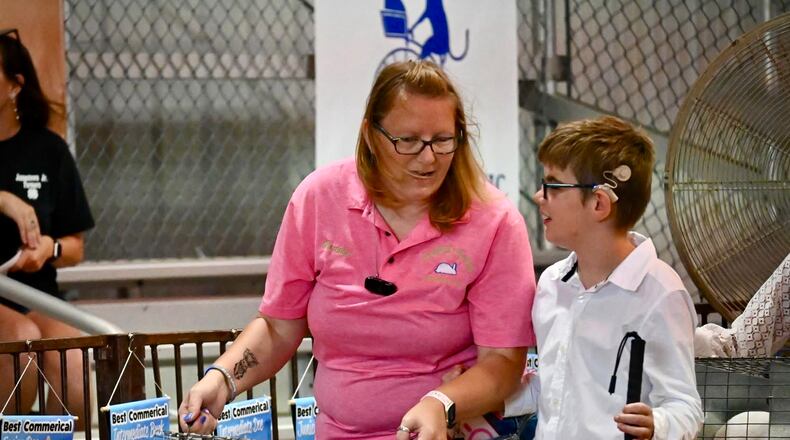Gunner was born with Donnai-Barrow Syndrome, an extraordinarily rare genetic condition that is estimated to affect less than 50 people worldwide. The disorder causes blindness, deafness and can affect other internal organs, though today Gunner is a healthy boy of nine years old.
Gunner showed hogs last year as a Cloverbud, the 4-H program for young children, but wanted to show an animal himself for his first year as a Farmers and Friends 4-H Club member.
“We don’t like to tell him he can’t do things, because there’s already a list of things that the doctor said he cannot do. So when he said he wanted to do 4-H we said, ‘We will figure it out,’” said mom Dakota Lawson.
Even if she had said no, it’s likely Gunner wouldn’t have let that stop him. He begged his parents to sign him up for the most difficult part of a rabbit project - showmanship judging.
“We at first were not going to sign him up for showmanship,” Lawson said. “Because, one, we hadn’t practiced it...but he said he could do it. (The 4-H Club) said they would help. And he did it.”
To help him succeed, organizers had to come up with some creative solutions. Gunner was assisted in the showmanship ring by Courtney Montgomery, a 4-H advisor and rabbit committee volunteer. Both the judge and Montgomery wore microphones connected to Gunner’s cochlear implants, so he could hear them above the fans and other animals.
“He wanted to carry the rabbits, so I kind of let him lead, and then if he needed help, then I just stepped in,” Montgomery said. “But then he caught on, he felt where my hands were, he put his hands where they needed to be, and eventually I was able to kind of step back a little bit and let him do his thing. He did a phenomenal job.”
The most difficult part of rabbit showmanship involves flipping the rabbit over for inspection by the judges. This takes a lot of practice and patience, but if done correctly ensures that the rabbit stays calm and safe.
“It’s hard for anyone, I can’t even do it,” Montgomery said.
It took a few tries, but Gunner was able to flip his rabbit to the satisfaction of the judges.
Recalling the moment, his mother struggled not to tear up.
“Watching him do things that other people have told him he can’t do is just, I love to see it. My husband loves to see it,” Dakota said. “Even if you do have some sort of disability, fair is still something you can do. There’s somebody going to be able to help you figure out how to do it best for you.”
4-H clubs across the region have adapted to provide for the needs of students with disabilities, Montgomery said. Adopting what is called a Winning 4-H Plan can help kids with disabilities succeed in their projects, programs, and activities.
“I think it’s coming along,” she said. “We’re seeing more and more inclusive measures for all of our members. We need more kids like him.”
About the Author


